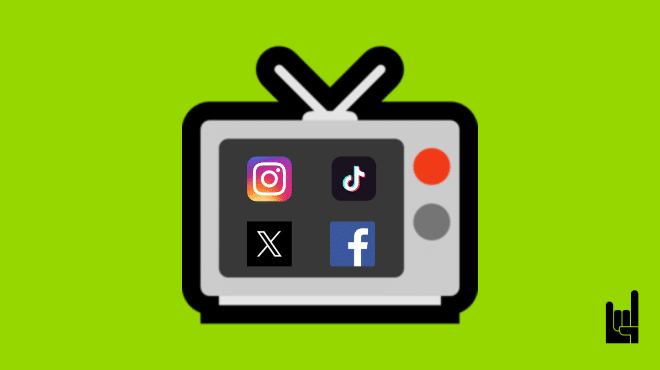The Customer Development Approach – Steve Blank
Steve outlines four stages to the customer development process as iteration loops with the following success end goals:
- Customer Discovery – Achieve Problem/Solution Fit
- Customer Validation – Achieve Product/Market Fit
- Customer Creation – Drive Demand
- Company Building – Scale the Company
The Customer Discovery stage ends with a Problem/ Solution fit and a Minimum Viable Product (MVP). During Customer Validation you validate your MVP by attempting to sell it – Nothing speaks clearer than a sale. Successful iteration here should result in a repeatable and scalable sales model.
Product/Market fit is the only thing that matters
Both models emphasize the importance of keeping burn rate as low as possible while iterating towards achieving Product/Market fit. Some level of preliminary value proposition iteration and sign up flow optimization is necessary to establish some early traffic but then the focus should quickly shift towards measuring product/market fit before anything else. You typically know when you achieve product/market fit but metrics help you measure and hopefully get you there faster. Now that my preliminary value proposition, sign up flow, MVP, and early traffic channels are *mostly* in place, the next step will be optimizing for user gratification and putting metrics in place to measure product/market fit. 
Growth Stages (aka Funnel)
Neil Patel, explains in an excellent way what a funnel is: “A funnel is a way to guide something which is usually unwieldy and uncooperative, like liquid. If you are building a product then your task is to guide people towards a particular goal (sign up, checkout, etc.). The problem is that people are unpredictable and full of free-will. If you are going to get people to do what you wish, en masse, then you must employ a funnel.” Everytime you think about Growth Hacking, picture in your mind the image of this funnel: 
Customer Acquisition:
Acquiring new customers means understanding what makes your customers tick! A successful company should have a continuous flow with prospects and be careful for not wasting money in the wrong channels.
Customer Activation:
This is the first time that people experience your “Aha!” moment and they experience the value proposition that you promised them.
Customer Retention:
Acquisition and retention mean nothing if people don’t stick to your product or service. This is one of the most vital factor if you want to achieve sustainable growth.
Revenue Generation:
People who pay for using your product or service are those that put the real fuel your company.
Referrals:
Once people love your product, you need to start to optimise viral growth mechanisms! and boost your growth engine. Viral growth is absolutely essential for achieving any significant scale in a B2C or B2B company.
Top 7 Growth Hacking Tactics
1. Analytics and Measurements
It’s a matter of Life and Death, for your product, to measure everything that is measurable. Even if you don’t know how to analyze those measurements (yet), be sure to watch your visitor’s Bounce Rate, Visits, Clicks and Time on Site. Get those measurements from Google Analytics and then compare them with your competition though the excellent Similar Web tool. It’s time for you to give numbers the importance they deserve. Even if will not do it, your possible, investors will!
2. Landing Pages
In the field of marketing and advertising, it’s common to refer to a landing page as being a standalone web page that has been designed for a single focused objective. This means that your landing page should have no global navigation to bond with your primary website. The main reason for this, is to limit your visitor’s options, guiding them that way, toward your intended conversion goal. You’ve got to create as many as possible specialized landing pages. Use your imagination and create simple pages in a click of a mouse with Unbounce or LeadPages, and remember to use Call-to-Actions to attract more clicks.
3. Onboarding
On-Boarding is about taking on and orienting a new customer. Through services like Intercom, you can, check where your users are clicking, how much time they spent with your application. Send automated messages based on their behaviour while navigating and contact them, when they are in trouble.
4. Social Networks
I’m a daily user of all famous social media platforms, such as Facebook, Instagram or Twitter. Facebook offers a great user experience as it comes to connecting with friends and people in general (nowadays, everyone has a Facebook account), but it lacks of big business communities.Instagram is great too;i stare at dog-related posts all day long (and from time to time, girls in bikinis). Twitter is a beast. I read somewhere that it would take 500 million post-it stickers, to circle the earth; that’s about the same amount of daily tweets. Twitter is a great tool for your business as you can convert friends and followers into email addresses. Automate the way you get Twitter followers and measure where they’re coming from.
5. A/B Testing
My personal favourite. Experimentation establishes success. Place rules that change your landing pages based on source or other criteria (like user’s location) and test different subjects,taglines or email bodies based on email’s conditional dispatching. In other words, test what works with your visitors and what’s not. There are many services out there that automate the process for you, but Visual Web Optimiser and Optimizely really blew me away.
6. Content Marketing
There are great ways to exploit what Content can offer to your product. And when it comes to content marketing, AppSumo is a king. Creating content is just the first step of the challenge of inbound marketing. The REAL challenge is finding the audience for it. First thing you have to do is to ensure that the content you create is evergreen. Share what you know best and write longer copies. Create Webinars and publish them on Webiners and Guest-Blog as much as your schedule can handle. For every piece of original content you create, have a list of relevant places on the web where you can share it. Test which Headlines works the best for your copy and go with it.
7. Email Marketing
Either it’s just a Newsletter or a direct commercial message, Email Marketing is vital. Services likeMailchimp and Campayn allow you to send the right email to the right people at the right time. Make sure your email provides information of value and include a call-to-action in it. Make it eye-catching and avoid the usage of spam-trigger words. Optimize your campaigns with A/B split testing and analyze your results. Flag your customers properly to ensure that they’ll stay subscribed.
Further Reading
As i’ve said before; Knowledge is the ulterior motive for a Growth Hacker. In the previous post, me and my friends at GrowthRocks, gave you a superb guide to Online Growth Hacking Courses. For this week’s article I thought that it would be nice to put here some great reading for you. All the books, aside from being awesome (and personal favourites for a long, long time), provide you with exclusive knowledge that you’ll find nowhere else. Trust me; money wasted on books are money not wasted at all.
- The 22 Immutable Laws Of Marketing | Al Ries & Jack Trout
- A/B Testings | Dan Siroker & Pete Koomen
- Growth Hacker Marketing| Ryan Holiday
- Growth Hacking – A How To Guide On Becoming A Growth Hacker | Jose & Joe Casanova
- 80/20 Sales And Marketing | Perry Marshall
- Steal Like An Artist | Austin Kleon
- Permission Marketing | Seth Godin
- Hooked | Nir Eyal
- Email Persuasion | Ian Brodie
- The Laws of Simplicity | John Maeda
Although it has been a long time since my last post, once again, it felt great creating a copy for all you GrowthRockers! Make sure you subscribe in order to get our latest content first and catch up with us on Twitter, Facebook or Google +. If you have any other tools, techniques, hacks or books to suggest (or just want to say “hello”), feel free to share them in the comment section. I’ll be more than happy to answer all of them.
Cheers 🙂

Theodore has 20 years of experience running successful and profitable software products. In his free time, he coaches and consults startups. His career includes managerial posts for companies in the UK and abroad, and he has significant skills in intrapreneurship and entrepreneurship.


![Community Marketing: 6 Steps to Building a Brand Community [+5 Examples]](https://growthrocks.com/wp-content/uploads/2023/07/community-marketing_GrowthRocksTN.jpg)

3 Responses
Hi Apostle! That’s a great list, I personally use TweetFavy.com to automate my twitter growth. Works great! You might want to take a look at it.
Hey,
Thanks for sharing Jerre!!! I’ll make sure to get the trial one of these days and let you know my thoughts! 🙂
Stay with this guys, you’re heilpng a lot of people.